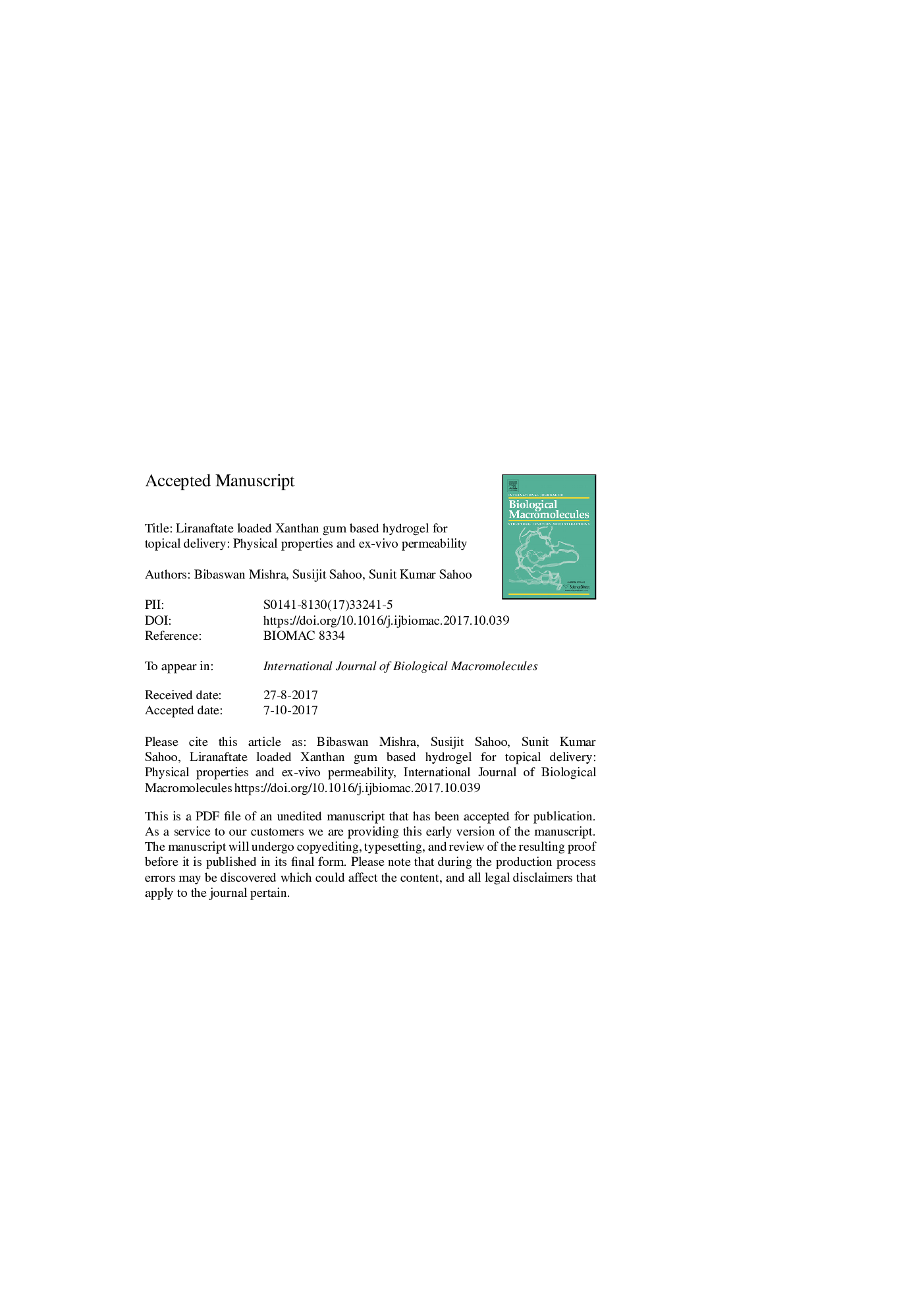| Article ID | Journal | Published Year | Pages | File Type |
|---|---|---|---|---|
| 8328775 | International Journal of Biological Macromolecules | 2018 | 30 Pages |
Abstract
A topical microemulsion (ME)-based hydrogel was developed to enhance permeation of an antifungal drug, liranaftate (LRFE) for effective eradication of cutaneous fungal infection. Pseudo-ternary phase diagrams were used to determine the existence of MEs region. ME formulations were prepared with Di-isopropyl adaptate, Cremophore-EL, Ethanol and distilled water. Xanthan Gum (1.5% w/w) was used for preparation of hydrogel of LRFE microemulsion (HLM) and characterized. The in-vitro and ex-vivo evaluation of prepared HLM and saturated drug solution were compared. The viscosity, average droplet size and pH of HLM were 142.30 ± 0.42 to 165.15 ± 0.21 Pa s, 52.53-93.40 nm and 6.6-7.1, respectively. Permeation rate of LRFE from optimized formulation (HLM-3), composed with Di-isopropyl adaptate (4.5% w/w), Cremophor-EL (30% w/w), Ethanol (10% w/w) and water (52% w/w) was observed higher in compare with other HLMs and saturated drug solution. HLM-3 was stable, six times higher drug deposition capacity in skin than saturated drug solution and did not caused any erythema based on skin sensitivity study on rat. The average zone of inhibition of HLM-3 (25.52 ± 0.26 mm) was higher in compare with saturated drug solution (13.44 ± 0.40 mm) against Candida albicans.
Related Topics
Life Sciences
Biochemistry, Genetics and Molecular Biology
Biochemistry
Authors
Bibaswan Mishra, Sunit Kumar Sahoo, Susijit Sahoo,
